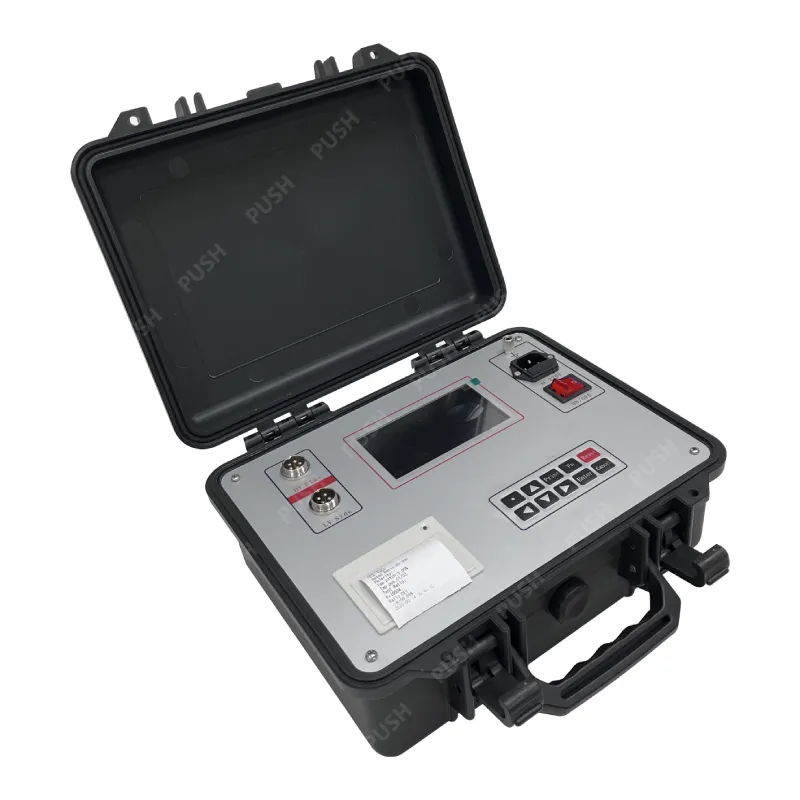TEL:
+86-0312-3189593
 English
English

Telephone:0312-3189593

Email:sales@oil-tester.com

-
 Afrikaans
Afrikaans -
 Albanian
Albanian -
 Amharic
Amharic -
 Arabic
Arabic -
 Armenian
Armenian -
 Azerbaijani
Azerbaijani -
 Basque
Basque -
 Belarusian
Belarusian -
 Bengali
Bengali -
 Bosnian
Bosnian -
 Bulgarian
Bulgarian -
 Catalan
Catalan -
 Cebuano
Cebuano -
 China
China -
 China (Taiwan)
China (Taiwan) -
 Corsican
Corsican -
 Croatian
Croatian -
 Czech
Czech -
 Danish
Danish -
 Dutch
Dutch -
 English
English -
 Esperanto
Esperanto -
 Estonian
Estonian -
 Finnish
Finnish -
 French
French -
 Frisian
Frisian -
 Galician
Galician -
 Georgian
Georgian -
 German
German -
 Greek
Greek -
 Gujarati
Gujarati -
 Haitian Creole
Haitian Creole -
 hausa
hausa -
 hawaiian
hawaiian -
 Hebrew
Hebrew -
 Hindi
Hindi -
 Miao
Miao -
 Hungarian
Hungarian -
 Icelandic
Icelandic -
 igbo
igbo -
 Indonesian
Indonesian -
 irish
irish -
 Italian
Italian -
 Japanese
Japanese -
 Javanese
Javanese -
 Kannada
Kannada -
 kazakh
kazakh -
 Khmer
Khmer -
 Rwandese
Rwandese -
 Korean
Korean -
 Kurdish
Kurdish -
 Kyrgyz
Kyrgyz -
 Lao
Lao -
 Latin
Latin -
 Latvian
Latvian -
 Lithuanian
Lithuanian -
 Luxembourgish
Luxembourgish -
 Macedonian
Macedonian -
 Malgashi
Malgashi -
 Malay
Malay -
 Malayalam
Malayalam -
 Maltese
Maltese -
 Maori
Maori -
 Marathi
Marathi -
 Mongolian
Mongolian -
 Myanmar
Myanmar -
 Nepali
Nepali -
 Norwegian
Norwegian -
 Norwegian
Norwegian -
 Occitan
Occitan -
 Pashto
Pashto -
 Persian
Persian -
 Polish
Polish -
 Portuguese
Portuguese -
 Punjabi
Punjabi -
 Romanian
Romanian -
 Russian
Russian -
 Samoan
Samoan -
 Scottish Gaelic
Scottish Gaelic -
 Serbian
Serbian -
 Sesotho
Sesotho -
 Shona
Shona -
 Sindhi
Sindhi -
 Sinhala
Sinhala -
 Slovak
Slovak -
 Slovenian
Slovenian -
 Somali
Somali -
 Spanish
Spanish -
 Sundanese
Sundanese -
 Swahili
Swahili -
 Swedish
Swedish -
 Tagalog
Tagalog -
 Tajik
Tajik -
 Tamil
Tamil -
 Tatar
Tatar -
 Telugu
Telugu -
 Thai
Thai -
 Turkish
Turkish -
 Turkmen
Turkmen -
 Ukrainian
Ukrainian -
 Urdu
Urdu -
 Uighur
Uighur -
 Uzbek
Uzbek -
 Vietnamese
Vietnamese -
 Welsh
Welsh -
 Bantu
Bantu -
 Yiddish
Yiddish -
 Yoruba
Yoruba -
 Zulu
Zulu
1-р сар . 29, 2025 04:09
Back to list
bdv transformer test
Understanding Partial Discharge Tests for Transformers A Comprehensive Guide
1. Electrical Measurement This involves sensing minute discharge currents using capacitive couplers or radio frequency current transformers, vital for evaluating discharge activities precisely. 2. Acoustic Detection Utilizing sensors or piezoelectric transducers, this technique identifies sounds emitted by discharges, which are particularly useful in locating partial discharges in oil-filled transformers. 3. Electromagnetic (UHF) Emissions The ultra-high frequency (UHF) method detects emissions from discharges, crucial for determining active discharge sites. Strategic Benefits of PD Testing for Transformers PD testing affords several strategic advantages. Primarily, it enables proactive maintenance strategies, allowing for the identification of defects before they manifest as severe breakdowns. This pre-emptive approach not only ensures safety and reliability but also reduces maintenance costs by focusing on specific at-risk components. Furthermore, PD analysis contributes to understanding transformer ageing, thereby informing replacement and upgrading decisions within asset management frameworks. In industries where transformer failure can lead to costly downtime, such as manufacturing or telecommunications, this predictive maintenance strategy proves indispensable. Enhancing Trust and Reliability Deploying partial discharge tests aligns with industry standards and best practices, enhancing the credibility and reliability of transformer service providers. By leveraging advanced PD testing, companies can assert their commitment to safety, quality, and state-of-the-art technological utilization. In summary, partial discharge testing is not simply a maintenance tool but a strategic imperative in the management of transformers, elevating operational standards and safeguarding infrastructural investments. Investing in robust PD testing regimes underscores a commitment to excellence, ensuring transformers’ performance aligns with ever-increasing efficiency and reliability demands in the modern electrical landscape.


1. Electrical Measurement This involves sensing minute discharge currents using capacitive couplers or radio frequency current transformers, vital for evaluating discharge activities precisely. 2. Acoustic Detection Utilizing sensors or piezoelectric transducers, this technique identifies sounds emitted by discharges, which are particularly useful in locating partial discharges in oil-filled transformers. 3. Electromagnetic (UHF) Emissions The ultra-high frequency (UHF) method detects emissions from discharges, crucial for determining active discharge sites. Strategic Benefits of PD Testing for Transformers PD testing affords several strategic advantages. Primarily, it enables proactive maintenance strategies, allowing for the identification of defects before they manifest as severe breakdowns. This pre-emptive approach not only ensures safety and reliability but also reduces maintenance costs by focusing on specific at-risk components. Furthermore, PD analysis contributes to understanding transformer ageing, thereby informing replacement and upgrading decisions within asset management frameworks. In industries where transformer failure can lead to costly downtime, such as manufacturing or telecommunications, this predictive maintenance strategy proves indispensable. Enhancing Trust and Reliability Deploying partial discharge tests aligns with industry standards and best practices, enhancing the credibility and reliability of transformer service providers. By leveraging advanced PD testing, companies can assert their commitment to safety, quality, and state-of-the-art technological utilization. In summary, partial discharge testing is not simply a maintenance tool but a strategic imperative in the management of transformers, elevating operational standards and safeguarding infrastructural investments. Investing in robust PD testing regimes underscores a commitment to excellence, ensuring transformers’ performance aligns with ever-increasing efficiency and reliability demands in the modern electrical landscape.
Latest news
-
Testing Equipment Industry Sees Major Advancements in 2025: Smart & Precision Technologies Lead the WayNewsJun.06,2025
-
Applications of Direct Current Generators in Renewable Energy SystemsNewsJun.05,2025
-
Hipot Tester Calibration and Accuracy GuidelinesNewsJun.05,2025
-
Digital Circuit Breaker Analyzer Features and BenefitsNewsJun.05,2025
-
Benefits of Real-Time Power Quality Monitoring Devices for Industrial EfficiencyNewsJun.05,2025
-
Earth Fault Loop Testing in High-Rise Building Electrical SystemsNewsJun.05,2025



